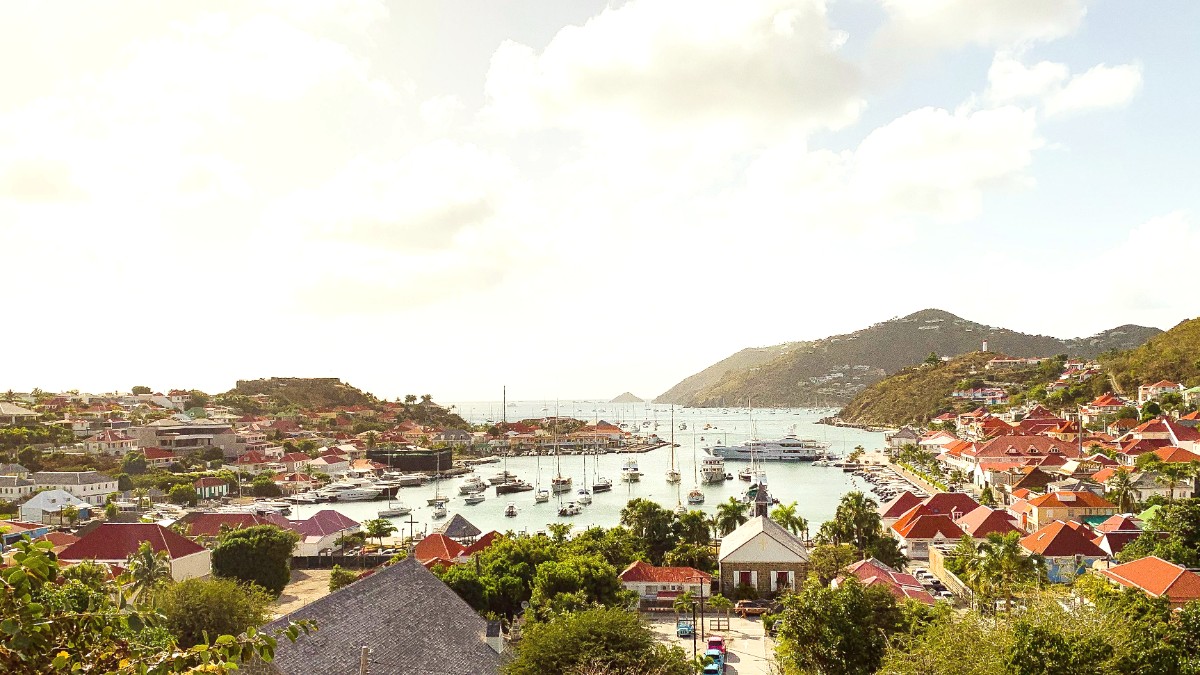
Imagine arriving on a small plane, descending over turquoise waters, with red-roofed villas dotting green hillsides. This visual welcome frames a visit defined by clear skies, warm breezes, and sparkling seas. St. Barts presents an environment that invites calm and enjoyment.
Visiting St. Barts is a chance to step away from daily routines and embrace a different rhythm. This permits visitors to truly settle in and enjoy their surroundings.
A trip here is more than just a getaway; it is an opportunity to experience an island that values both natural preservation and refined hospitality. Travelers often leave feeling refreshed, with memories of sun-drenched days and star-filled nights. The island is a quiet allure that calls people back, time after time, seeking its distinct charm and peaceful setting.
St. Barthélemy sits in the Caribbean Sea, part of the Leeward Islands in the Lesser Antilles. This location places it southeast of St. Martin/St. Maarten and northwest of St. Kitts. The island spans a relatively small area, approximately 8 square miles (21 square kilometers). Its compact size fosters a distinct atmosphere, visitors may explore its various corners with relative ease.
The island's terrain has a mix of rolling hills, lush valleys, and numerous coves and bays that form its varied coastline. The highest point, Morne du Vitet, reaches about 938 feet (286 meters) above sea level. This elevated landscape offers many natural viewpoints showing sweeping vistas of the turquoise ocean, neighboring islands, and the island's red-roofed settlements. The hilly interior indicates roads often wind and climb, shaping the island's distinct character.
Some beaches have calm, protected waters ideal for swimming and snorkeling, while others show more rugged conditions.
This area is dedicated to preserving the island's underwater life.
It is marked by consistent warmth throughout the year, softened by trade winds.
The consistent breeze keeps the air feeling fresh, even during warmer months.
This influences the lushness of its vegetation and daily life patterns.
Despite its relatively small size, St. Barts has a diverse natural environment. From its dramatic, rocky coastlines to its soft, sandy shores, the island shows a range of natural settings.
The compact geography permits easy transitions between different types of landscapes, from the busy harbor of Gustavia to the quiet, undeveloped stretches of Saline Beach. The island's position in the Caribbean also shows consistent ocean breezes, which yields temperate conditions for outdoor activities throughout much of the year.
These reefs are part of the St. Barthélemy Marine Reserve, an area dedicated to preserving the island's underwater life.
The island's position in the Caribbean also shows consistent ocean breezes, which yields temperate conditions for outdoor activities throughout much of the year.
The island has distinct dry and wet seasons, influencing the lushness of its vegetation and the patterns of daily life.
St. Barthélemy has a history shaped by various European powers, contributing to its unique cultural identity today. The Arawak people were the island's earliest known inhabitants, followed by the Caribs. European contact began with Christopher Columbus, who named the island in 1493 after his brother, Bartolomé. However, permanent European settlement did not occur until later.
France claimed the island in 1648, establishing a small agricultural colony. French settlers, mainly from Normandy and Brittany, arrived and began cultivating tobacco and cotton. The challenges of the terrain and the limited water supply meant the island did not develop large-scale plantation economies like many other Caribbean islands. This smaller scale of development shaped its demographic and social structure, with a smaller number of enslaved people compared to other colonies. The population remained predominantly of European descent, which distinguishes it from many of its neighbors.
French settlers arrived in 1648, cultivating tobacco and cotton. The island's terrain meant smaller-scale development.
From 1784-1878, Swedish rule made Gustavia a free port, drawing merchants and trade.
After 1878, the island returned to France, gaining autonomy in 2007 as an overseas collectivity.
In 1784, France traded St. Barthélemy to Sweden in exchange for trading rights in the Swedish port of Gothenburg. This period of Swedish rule, lasting until 1878, made a noticeable mark on the island, specifically in its capital, Gustavia.
The island is small, measuring approximately 8 square miles (21 square kilometers), with a hilly landscape and over 20 beaches.
The Euro is the official currency. The island is known for its high standard of services and upscale amenities.
St. Barts presents a blend of French sophistication and relaxed island charm, with French as the official language.
St. Barts draws a diverse group of visitors, from families seeking a quiet escape to couples celebrating special occasions.
Its unique combination of natural charm, upscale amenities, and a calm atmosphere sets it apart from other Caribbean destinations.
A trip here is an opportunity for relaxation, enjoyment, and a taste of refined island living. The island's commitment to maintaining its unique character makes for a memorable visit.